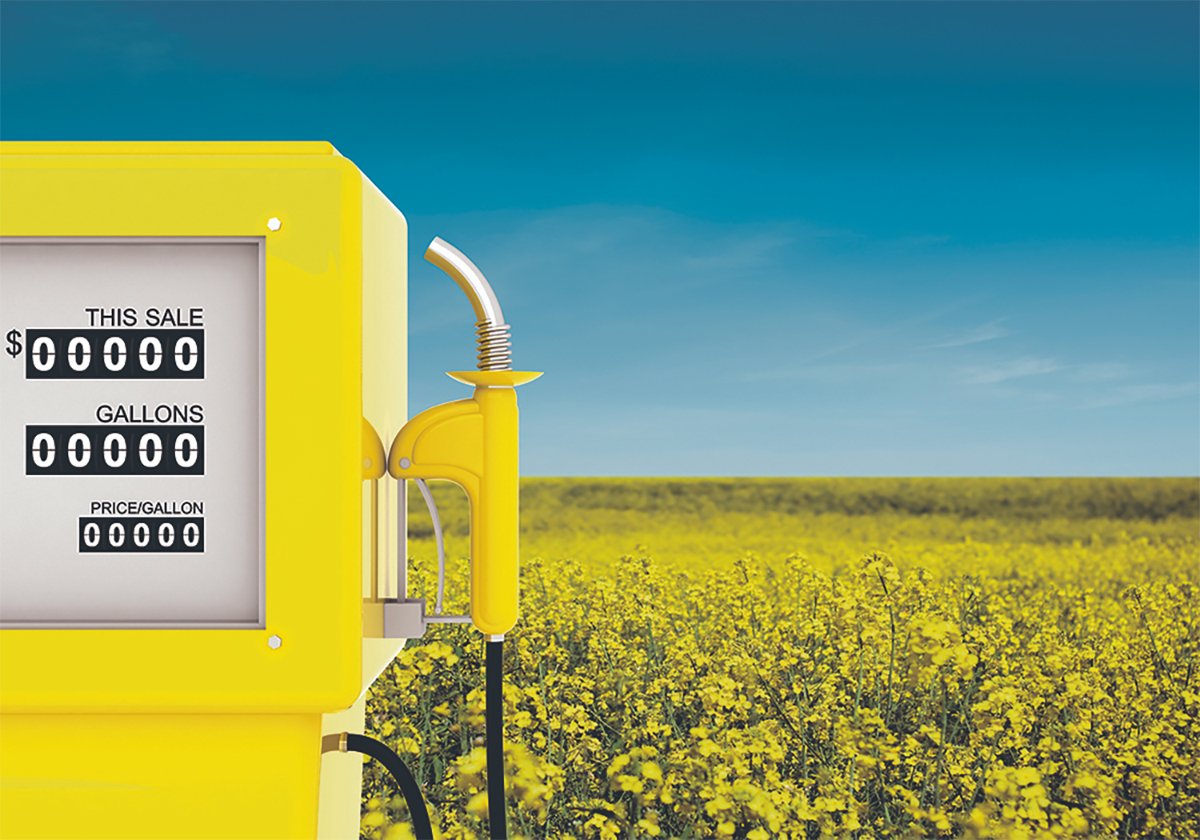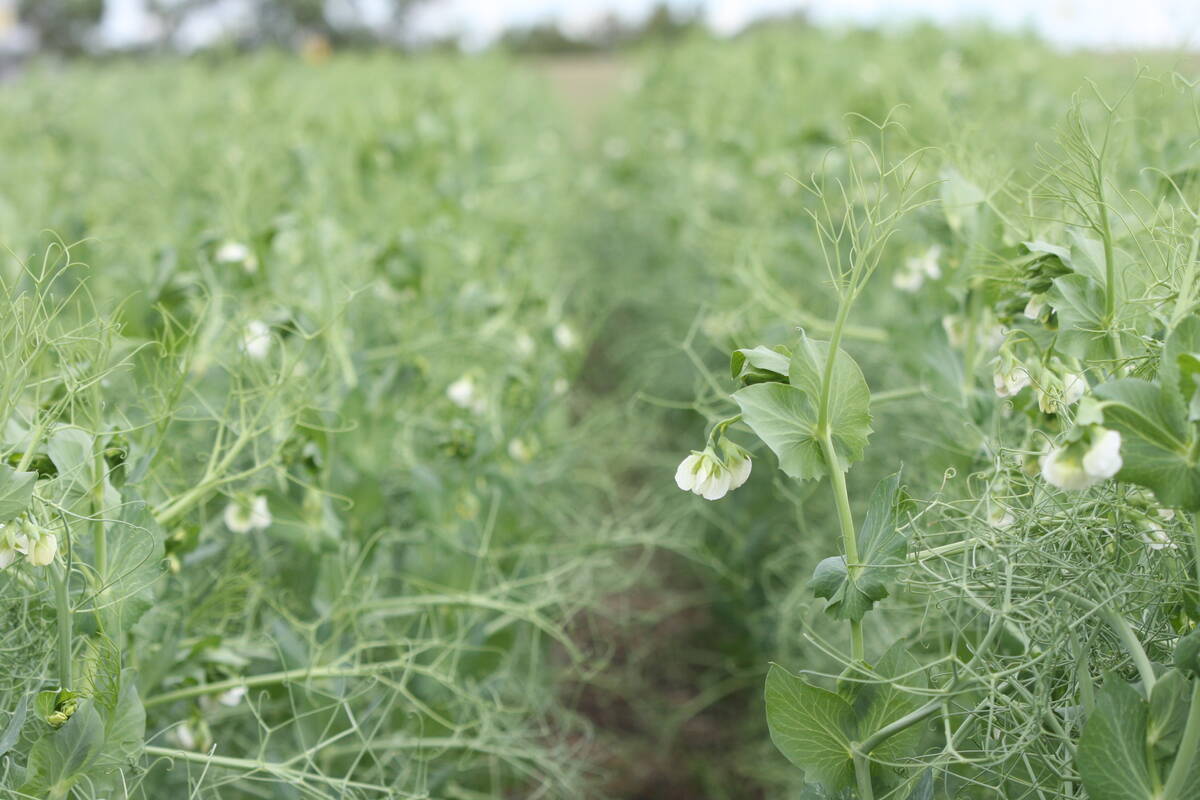REGINA — Canola gets the headlines, but other sectors are also working to resolve Chinese tariffs with little of the same media attention.
Peas, including yellow, green and maple, have faced a 100 per cent tariff since March, similar to canola oil and meal. Canola seed faces a 78.5 per cent duty, while certain pork and seafood products are at a 25 per cent tariff.
Bill Prybylski, a Saskatchewan farmer and president of the Agricultural Producers Association of Saskatchewan, said farmers are starting to worry about what to plant next year, given where pea prices are now. Producers have to be profitable, he said.
Read Also

Biofuel sector happy with federal budget
Advanced Biofuels Canada says new Biofuel Production Incentive is a lifeline until CFR amendments are in place.
“If pea prices remain depressed, like they are, I’m sure there’s a lot of producers that will be pulling peas out of the rotation,” he said last month.
That could in turn affect the province’s processors, and farmers can’t afford to lose them, he said.
“We know how important the peas are in the rotation for all the benefits they bring for the environment, for the carbon life cycle and soil health, so we certainly don’t want to lose the industry,” Prybylski said.
“We’d like to see maybe a little more attention given to the pea industry.”
Pulse Canada president Greg Cherewyk said he isn’t sure why the complex tariff matter has been simplified to canola versus electric vehicle tariffs. He said it has been challenging to assure pea industry stakeholders there is work being done.
On the other hand, daily media attention isn’t the best thing when it comes to leverage in negotiations, he said.
In late October, federal agriculture minister Heath MacDonald went to China to meet with senior officials and other stakeholders. Prime minister Mark Carney attended the Asia-Pacific Economic Co-operation summit in South Korea, where he intended to meet with Chinese president Xi Jinping.
Cherewyk said the situation changes daily and hoped those trips would help resolve it.
He said Pulse Canada has been in Ottawa to make sure officials understand how important that resolution is, even if peas aren’t the first commodity that comes to mind. Canada has worked hard for 25 years to establish itself as the biggest pea supplier in the world’s largest market, he added.
“I was just (in Ottawa) last week, and the big message we were delivering was prioritize, prioritize, prioritize because there’s a lot going on,” he said.
“You’ve got years worth of grievances here that the government is working through in the context of its relationship with China.”
On average, the Chinese market can take 110,000 to 120,000 tonnes of peas each month, but essentially none have moved since the March 8 tariff announcement.
Cherewyk said importers can apply for exemptions under special circumstances, but that is onerous and requires a lot of documentation.
Pulse Canada staff met with customers even before the tariffs were announced to see about exemptions, but he said political events in Canada — a leadership campaign, then an election, then a G7 summit and tense negotiations with the United States — were distractions.
He said work has continued, but it isn’t enough to simply talk about meetings.
“We have to be delivering results and we’ve done everything we can to create a sense of urgency in Ottawa around this,” said Cherewyk.
“I’m confident that there’s a different attitude towards trade and negotiating agreements in Ottawa these days.”
Foreign affairs minister Anita Anand is fully briefed and the Carney government understands deals must be made, he said.
Still, he said the 43 per cent drop in yellow pea prices and the 50 per cent drop in green pea prices is concerning. Canada will end up with significant carryout if China remains closed.
It’s not a good situation for the Chinese, either, because they prefer Canadian peas.
Saskatchewan Pulse Growers executive director Carl Potts said the province’s growers produce about half of the exports to China.
Farmers have worked for decades to build 50,000 tonnes of demand into more than two million tonnes at peak a few years ago, and the message to government is that farmers “won’t stand for their economic interests in a long-standing market being traded to protect other sectors of the economy,” he said.
Potts expects that by January or February, when new crop prices are available, growers will be making planting decisions, and low prices won’t attract more pea acres.
“Even if we were to produce a million tonnes less of peas, we’re still in a huge net export situation,” he said.

“So there is ample supply available for domestic processors to be able to compete. But at the end of the day, it makes it more difficult for farmers to find that right-priced crop to be in their rotation.”
He said the longer the tariffs are on, the tougher it will be for Canada to regain market share.
Cherewyk said the last few years were spent on diversification opportunities, particularly in feed markets and pet food.
“We’ve hired a pet food animal nutritionist this year to really accelerate what we’re doing in that space,” he said.
“We’ve got two feed nutritionists that work for us in Southeast Asia or the Indo Pacific. We have to create outlets for peas, and unfortunately, when the price drops, you get more attention from those markets, so you have to size it.”
However, adding markets in this region and Mexico won’t replace China, at least not overnight.
Cherewyk also said all countries are experiencing market shifts. For example, Brazil ousted the United States as the top supplier of soybeans as a result of the first trade war with China.
“When those types of things happen, you don’t get them back. You don’t get to assume that you will become the premier supplier once again,” he said.
“It’s a message that we continue to deliver as we’re talking about the sense of urgency that we’re feeling.”
Pulse growers have not asked for government assistance for peas, as announced for the canola sector because they want the government’s focus on re-opening the market.
















